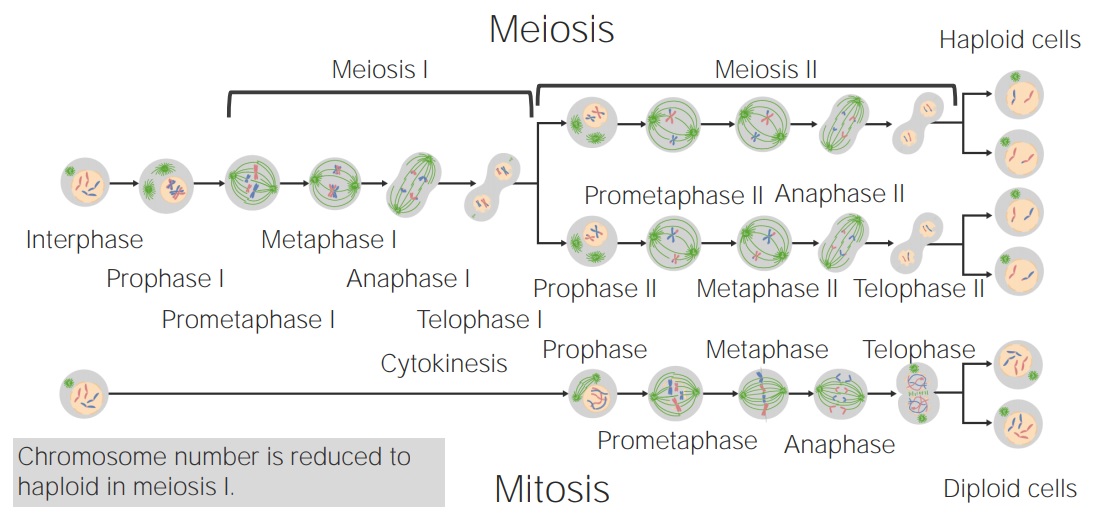Playlist
Show Playlist
Hide Playlist
Meiosis I: Anaphase I and Telophase I
-
Slides 13 Meiosis CellBiology.pdf
-
Reference List Molecular and Cell Biology.pdf
-
Download Lecture Overview
00:00 Jetzt gehen wir also zur Anaphase über. Ähnliche Dinge passieren auch hier. Es bestehen einige gleiche Zellzyklen und Kontrollen. Die Spindelfasern ziehen die Chromosomen in Richtung des gegenüberliegenden Endes der Zelle. 00:15 Vergessen Sie nicht, dass hier von den Chromosomen die Rede ist. Wir ziehen die homologe Chromosomen auseinander. 00:22 Wir ziehen homologe Paare auseinander. Ich berücksichtige in meinem Kopf hier immer das Wort "replizieren", damit ich es nicht verwechseln kann. 00:30 Wir ziehen nicht nur homologe Chromosomen auseinander, denn das ist nicht, was geschieht. Es sind replizierte homologe Chromosomen. Und in der Anaphase werden sie getrennt. 00:43 Und dann gehen wir weiter und betrachten die weitere Vorgänge. Die Schwesterchromatiden hängen also noch immer zusammen und dringen gemeinsam in die Zelle ein. Wir haben eines von jedem Homolog, das in einen neuen Zellkern eindringt. 00:57 Und dann sehen wir, daß, je nach Spezies möglicherweise eine neue Kernhüllen gebildet wird. 01:06 Wir müssen jedoch nicht zwingenderweise eine Zytokinese zwischen Meiose I und Meiose II haben. Von hier aus werden wir also direkt in die Meiose II übergehen. Nochmals, es gibt keine Synthese. Wir haben also getrennte homologe Chromosomen. Wir durchlaufen keinen Zellzyklus. 01:34 Wir gehen jetzt direkt in die Meiose II und trennen die Schwesterchromatiden. 01:40 Die DNA-Replikation findet also vor der Meiose I statt, aber aber nicht vor der Meiose II.
About the Lecture
The lecture Meiosis I: Anaphase I and Telophase I by Georgina Cornwall, PhD is from the course Cell Cycle and Cell Division.
Included Quiz Questions
Which of the following is NOT a correct statement regarding meiosis?
- Meiosis I and meiosis II are always separated by a long interphase II.
- During anaphase I, the replicated homologous chromosomes move apart toward the opposite poles with the help of kinetochore microtubules.
- No DNA synthesis occurs between the meiosis I and meiosis II phases.
- A nuclear envelope may or may not form during telophase I, depending upon the species.
- Cytokinesis may or may not occur between meiosis I and meiosis II divisions.
You are studying meiosis in an organism where 2n = 28. How many chromosomes will be present in each daughter cell after meiosis I metaphase but before the beginning of meiosis II?
- 14
- 7
- 22
- 56
- 46
Customer reviews
5,0 of 5 stars
| 5 Stars |
|
5 |
| 4 Stars |
|
0 |
| 3 Stars |
|
0 |
| 2 Stars |
|
0 |
| 1 Star |
|
0 |




